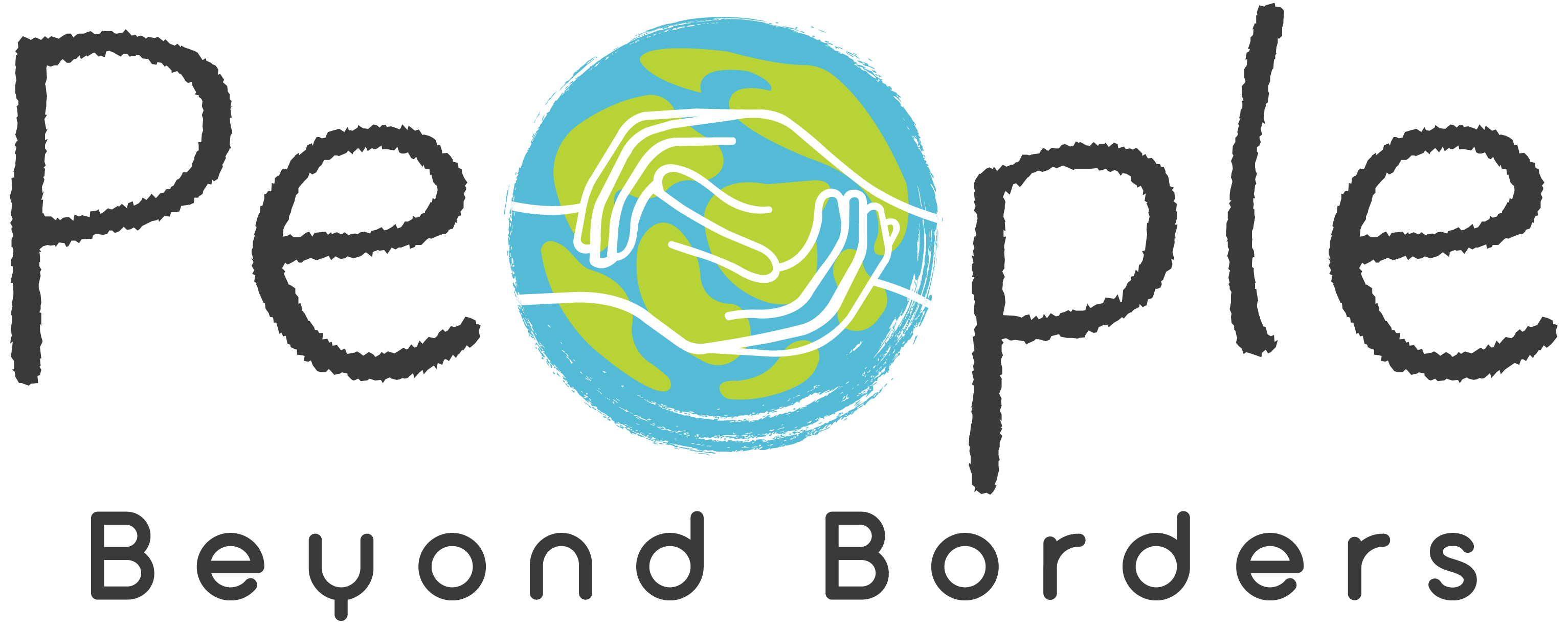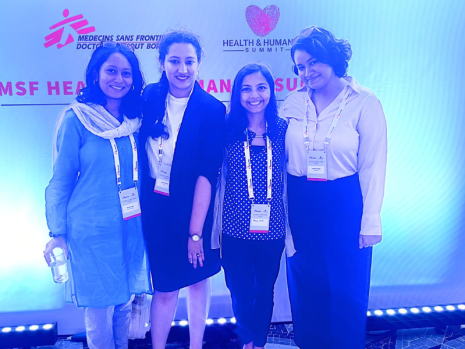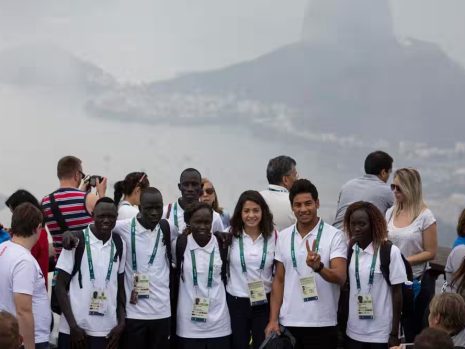PBB’s Training of Trainers, a hybrid “learn-teach-learn” co-creative program for displaced and migrant artists based in Berlin and coming from all around the world, kickstarted in February 2023. In the fifth session of the ToT on 14th March, we kickstarted the third and last module of the online stage of the program. We were grateful to be joined by two amazing facilitators from the Exploring Visual Cultures (EVC) project – Dr. Avi Sooful, senior lecturer of Fine Arts at the University of Pretoria, South Africa, and Dr. Ernst Wagner, senior lecturer at the UNESCO Chair for Cultural Education. Their short bios are shared at the end of this blog.
Introduction
This last module of the ToT’s first stage is meant to spark creative and theoretical reflections to inspire participants in their respective creative processes tuned into arts and education projects. Led by Ernst and Avi, we talked about the EVC project, the importance of intercultural dialogue and collaborative work in creating new narratives, and its tremendous potential for arts and education.
EVC project – a collaborative network exploring the entanglement of visual objects and images
The session started with Ernst’s presentation of the EVC project, a collaborative network working across national and cultural borders to understand art and visual objects.
“EVC project is a transnational project focusing on collective narratives in respect to visual cultures or told through visual cultures or visual objects. So we are talking about art works, but not only what we in the West call art, but also about any kind of visual object, also from, for instance indigenous people and so on.” – Ernst (facilitator)
A central question to the EVC project is, as framed by Ernst: How to understand objects or artworks in this context of understanding visual cultures from different parts of the world?
A very important aspect of EVC’s work towards this goal is the emphasis on collective and collaborative reflection –
“It’s all about this collective narrative and we want to have this transnational collaboration because I think this is the most challenging thing at our time. Because we all have these different backgrounds, coming from different parts of the world, and you have this experience of being confronted with somebody with another culture [..] and from this experience, I think it is important to understand each other interculturally, to have an intercultural dialogue not only through exchanging but really through collaboration.” – Ernst (facilitator)
The EVC project concentrates on a gallery section, a database of objects and visual artifacts from different places of the world, each of them presented and discussed. Another section of the website is the lab, in which are developed narratives connecting different objects from the database.

“We are talking about entangled images, so we are interested in narratives between different art works. We have to invest in the future to develop these kinds of narratives. It is something very important also in education, to connect things together. I compare it with what a curator does, when he or she is curating an exhibition. To tell a story that tells something to the audience” – Ernst (facilitator)
How do cultures interact – What shapes their encounters and relations?
Against a static or isolated understanding of culture, typical for instance within nationalist ideologies, which denies interrelations and exchanges between different cultures, EVC project reflects on the entanglements of diverse cultures from different parts of the world. It aims to understand the spectrum of approaches to culture and the encounters between them.
Talking about the entanglement of images, or intercultural dialogue, Ernst developed a spectrum to name the different ways in which cultures can interact or be brought together.

“It can start with exclusion, or destruction: it’s also a kind of interaction. It’s a kind of negative relation but it’s still a form of relation. On the other side of the polarity, there is resonance or transcultural relations” – Ernst (facilitator)
These positive forms of relations that are resonance or transcultural relations can for instance take the form of the transformation of an object or art piece or reference, to create something new. It could also be understood as hybridization, the use of different inputs or voices to create something new. In between these two opposites poles, there is a spectrum of forms of cultural contact or encounters.
Power relations determining the cultural encounters – Colonialism & the Benin Bronzes
As Ernst argues, where the meeting of cultures lies on the spectrum presented above, and whether this meeting will take a positive (to the right of the spectrum) or negative (to the left) form, is dependent on the power relations that exist between these two cultures.
While some encounters between different cultures have been shaped by an effort to negotiate between equals, others (particularly in colonial times but also beyond) have been marked by hegemony, that is the dominance of one culture, and the idea of a hierarchy, claiming the superiority of one’s culture over others. Ernst presented us with the history of the Benin Bronzes – from their stealing, during British colonial rule, to their restitution – to illustrate the dynamics of cultural contact and the power relations shaping these encounters.

From this example, Ernst developed a list of theoretical questions that emerge, in regards to visual objects and artifacts, the power relations and interactions at play in their encounters with other cultures.
Who owns the work? Who owns the knowledge about this work? Who owns the possibilities of publishing about these knowledges?
It is not only about the ownership of objects, but the ownership of knowledge about these objects.
Who is able to speak about these works? Whose voices are heard? Who is able to deliver a perspective in respect to the discourse?
It is not only about who owns but about who speaks about the work.
What is spoken: which narratives are told, and in which context?
If you look at the Benin Bronzes, each museum has a different story. It’s very important to look at the different narratives.
In which language is the narrative told?
As Ernst explains:
“The language spoken in Benin City is Edo, and we have terms in Edo that cannot be translated in German. Already then, using a certain language means that you cannot translate everything […] We have a loss of meaning because languages are limiting what we can understand, and how we understand something.”
In regards to intercultural dialogue:
Can the works be negotiated? For the Benin Bronzes, it was possible as they were given back. But what about the interpretations of artworks: can one negotiate the interpretations of the work? As Ernst points out, the interpretation of the Benin Bronzes in western museums is totally different from their interpretation in Benin City in Nigeria – How can we deal with this discrepancy through negotiation?
How to translate the non-translatable? What are objects? How to deal with the mode of being of works or artifacts like the Benin Bronzes?
These objects are linked to the presence of ancestors. In a German museum, these objects are isolated, decontextualized and put into vitrines. It is a totally different mode of being for this object from the museum to Benin.
These questions deeply resonated with Sondos’s project and reflections:
“In Egypt, we are used to having a big deal of our art works exported. It is usually stolen or sort of gifted from earlier colonies to countries. Like Britain, they have the biggest collection of Egyptian art. I think a part that’s really important is that many people who just see the art in museum or exhibition, if you don’t have the right narrative beside it, you won’t really understand.
With things related to culture, it’s important that the person who sees the artifact understands where it’s coming from. When it’s embedded in the culture, it’s something that […] represents more of an identity than just a nice piece of art, a color or pattern that’s attractive. That’s why I was thinking about this project, […] I don’t want to just show icons, or well-known objects, I want to teach what they represent, why do we do them? How was this merged with another form of art when colonization happened? “ – Sondos (participant artist)
Paradigm shift in arts and education
In the second part of the session, Avi presented us with a wide gallery of artworks, objects, and projects from different countries in which EVC works, weaving narratives going beyond the fragmentations and hierarchies between social groups, identities, races, and cultures. These artworks were dealing among others with themes such as womanhood, gender-based violence, colonialism, and colonized identities.
Among the diverse works, Avi presented us with a textbook project that EVC is working on which aims at developing a textbook for art educators, breaking the ideas of what education is in Germany versus what it is in Ghana, synchronizing and merging ideas and understanding of artworks.
“The workshop that we were engaging for two days, trying to unpack ideas that create a melting pot of understanding each other, understanding where we’re going, and an understanding for the future child. And these are important things that we need to keep in mind, education is something that is so flexible and change is something that is always a constant. We need to just simply find a way of negotiating through this particular change.”
As a way of concluding her presentation, she showed us the piece below:
“We are the paradigm shift in art education, simultaneously dismantling systemic barriers”
As she puts it: “This is what our task is”. – Avi (facilitator)

Profiles of the facilitators
Dr. Avi Sooful is the chair of EVC’s panel, and senior lecturer at the Fine Art at the University of Pretoria, South Africa, and National President of the South African National Association for the Visual Arts. Her area of focus lies in feminist positions within the visual arts, and for the past ten years, her work has focused on the notion of landscape as both political and feminist images.
Dr. Ernst Wagner is a lecturer at the Academy of Fine Arts, München, Germany, and serves as secretary to the EVC project. Coordinating the project at the UNESCO-Chair in Arts and Culture in Education, his research is focused on Heritage Education, Intercultural Communication, Visual Literacy, Arts Education, and Education for Sustainable Development.



